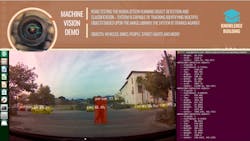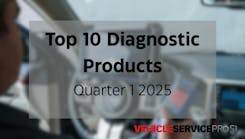In recent times, the automotive service industry has seen a significant transformation powered by advancements in artificial intelligence (AI) and artificial neural networks (ANNs). These technologies are revolutionizing the way vehicles are controlled, monitored, diagnosed, and serviced. From enhancing powertrain efficiency to ensuring emissions compliance, AI-powered systems have become an integral part of modern vehicles. However, as these intelligent systems become more popular, automotive technicians will need to evolve their diagnostic approaches. This article shares my perspective on why technicians need to cultivate a deeper understanding of these technologies to realize success in the service and repair market.
AI then and now
Did you know that AI has been operating on modern vehicles for at least a decade now? Figure 1 shows how ANNs are used to predict cylinder fill on a 2012 production vehicle. During the development of advanced engine designs with variable camshaft timing, lift, etc., engineers had to find solutions to better predict cylinder fill across a complex set of variables, and AI was a solution that worked out for some. Because of this, when you are engaged in a repair on any system these days, you should always refer to service information for the proper resets and relearn procedures. If you don’t, you’ll likely end up leaving the system relying on old or adapted calibrations that may negatively affect your service/repair.
Additionally, AI has also been in play on climate control systems found in Toyota vehicles for many years now, and I’m sure that there are other applications out there as well.
Today, AI now has many uses across multiple industries including aviation where predictive maintenance has had a positive impact on unexpected downtime. Additionally, the airline industry is using AI along with augmented reality to aid service personnel in training and in carrying out service and maintenance operations. However, there is still deep concern around AI replacing many human-oriented processes. In fact, I’ve been witnessing discussions within the professional automotive service and repair environment about the possibilities, both positive and negative. From my perspective, many are considering the wrong question. Instead, we should be asking ourselves; how can we practically leverage AI and use it as a tool?
I entered this industry over 40 years ago and I have seen many changes. In my professional opinion, AI is bound to surface remarkable opportunities and is poised to positively change workflow operations and help the next generation of technicians achieve success in their field. Technicians will always be needed to perform the work, but when it comes to navigating complex challenges, AI can help guide technicians by providing a pathway to success. No doubt that there is a concern about how AI will replace humans which in many situations is true. However, I strongly believe that those who refuse to use AI are more likely to be replaced than those who do.
AI and ADAS
If you take a deep look into what Tesla is delivering to the market as Full Self-Driving (Supervised) FSD, you will see their systems using inputs from many sensors such as cameras, sonar, and data from inertial measurement units (IMUs) to localize the vehicle to its immediate and future environments. It does this by identifying and classifying objects, assessing volumetric space, measuring, and monitoring changes in distances to hazards in real-time, predicting and planning, and executing vehicle behavior (Figure 2). I own two of these machines and I am absolutely amazed at what this technology has been able to accomplish. If you have not been able to witness this level of vehicle performance, I highly recommend having a look. I was honored to deliver a keynote at an event earlier this year in San Diego, California, and I wanted to create a short video demonstrating the vehicle’s performance.
In this video, I requested that the vehicle drive me from my shop’s private driveway in Claremont, CA, to a Tesla center 7.5 miles away in Upland. The vehicle performed every maneuver without any input from me. When it arrived and pulled into the driveway at the Tesla center, I disengaged and then prompted the vehicle to perform an “Auto Park” operation. After watching the video, I think you will be able to see the power I am referring to (Figure 3).
The sensor suite on my oldest Tesla (2018 Model 3) has eight cameras looking outward and a forward-facing radar sensor, which is no longer being used to support the vehicle’s Full Self-Driving (Supervised) operations. The vehicle is also equipped with 12 ultrasonic sensors placed around the front and rear perimeters of the vehicle. That vehicle has been able to drive from one driveway to another destination 40+ miles away performing all the dynamic driving tasks a human driver would normally need to perform. I also have a 2023 Model Y (which was used for the previously mentioned video) that has one less forward-facing camera, no radar or ultrasonic sensors, and the vehicle can deliver outstanding driver-aid support. However, this vehicle is equipped with Tesla’s “Hardware 4” autopilot computer, and as of this writing, Tesla has not unleashed the full power of this new hardware suite yet. It is still developing based on the power capabilities of the previous hardware suite.
Other uses for AI
Personally, I have used AI in many ways such as asking an AI application questions about a technical document that was written way above my knowledge level and having it provide answers. In this example, I was able to develop a deeper understanding of what one vehicle manufacturer's requirements are for vendors producing modules with CAN transceivers, what the performance requirements are when adverse vehicle conditions exist such as voltage drops, ground faults, and more, and how they are to behave when those thresholds are exceeded. To me, this was quite remarkable because it streamlined my learning pathway helping me bridge the gap between my current knowledge level and the level the document was written for. I have bought technical papers in the past with the same goal of increasing my knowledge but struggled to really understand and obtain what I was looking for.
Situational awareness and decision-making
Automotive service and repair are tough businesses and require skilled and knowledgeable personnel to deliver the right client experience in addition to providing competent service. In fact, your front office staff is likely finding that they spend a ton of time educating the client about why a particular repair needs to be performed and how complex the process is to complete with long-lasting results. Sometimes explaining how this stuff works can be daunting, and this is where an application like ChatGPT can help. My front office staff uses ChatGPT to create communications to help with consumer education. Here are a couple of examples of how we would typically prompt the AI to help (Figures 4 & 5).
It is no secret that the service and repair industry is deeply reliant on skilled technicians who have the knowledge, experience, and dedication to keep vehicles on the road. AI can serve as a reliable ally in this mission, presenting technicians with valuable insights that can guide their decision-making process and can keep their situational awareness working at an elevated level.
Imagine a scenario where a technician meets a complex issue where a solid diagnosis cannot be achieved. In such instances, a professionally trained AI can rapidly analyze historical data, similar case studies, and relevant technical information to provide potential solutions. This does not undermine the technician's ability; rather, it enhances their problem-solving ability by offering a broader perspective. This allows for the technician to effectively prioritize their diagnostic strategy.
Imagine another scenario where the technician has a vehicle with intermittent communication failures. The technician can prompt the AI to provide specific details on a particular communication bus they want more information on. The smart AI system provides a summarized report having connector numbers, pinout details with images, part numbers, visual part locations, normal signal patterns, and more. I think you can see where I am going with this.
Moreover, AI-powered tools can help in streamlining the repair process. Real-time data analysis can help technicians find the root cause of a problem more efficiently, especially on a carline they may not have a lot of experience with, effectively reducing errors and minimizing the time a vehicle spends in the shop. By making informed decisions using these expert systems, technicians can deliver higher quality service resulting in higher customer satisfaction.
A pathway to increased profits & success
In the world of business, efficiency often translates to profitability. Repair shops are no exception. Incorporating AI into daily operations can positively affect the bottom line by helping with both internal and external communications, marketing, and more. AI can help your technicians write more concisely about their services resulting in a higher level of consumer comprehensibility.
As AI makes its presence felt in the professional service and repair marketplace, culturing trust between technicians and AI systems becomes incredibly significant. Technicians should view AI as a supportive tool that augments their skills, not as a replacement. This means investing in training and education to ensure technicians are well-versed in AI applications and are confident in using its capabilities to their advantage.
Furthermore, AI systems should be designed with transparency and explainability in mind. Technicians should have a clear understanding of how AI arrives at its conclusions, allowing them to confirm recommendations and make informed decisions confidently. Building this level of collaboration between humans and AI will be the key to harnessing the technology's full potential.
If you’d like to see an example of how an AI robot is responding to certain technical questions, head on over to diag.net and have a look (Figure 6).








